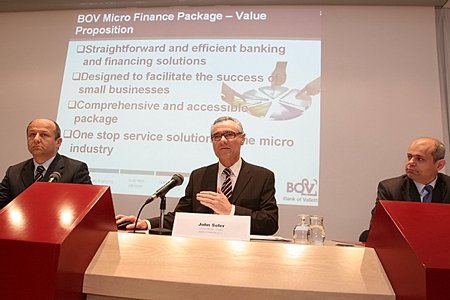Much to the surprise of many observers of the small business finance scene, the government’s often criticised Loan Guarantee Scheme was given a new lease of life in the 1986 Budget. To many the scheme had seemed to be dead on its feet because of the higher premium, lower guarantee and other restrictions introduced in an attempt to stem the losses, which the government had not expected. It had thought, rather naively, that the scheme would pay for itself. The businesses which received funds under the scheme were inevitably high risk projects, otherwise they would have been able to obtain finance anyway. One aspect of the scheme was that it gave people who either did not have collateral or were unwilling to provide it a chance of finding capital. In its peak year of 1982-83 more than 6000 loans were made under the scheme, with the government guaranteeing up to 80 per cent of approved bank loans up to £75,000 in exchange for a 3 per cent premium on the guaranteed part, paid in addition to the bank’s own interest rate.
The scale of losses, however, caused the government to cut its guarantee to 70 per cent and raise the premium to 5 per cent in June 1984. This did not reduce the loss rate, however, and further restrictions were introduced later that year. One of the new requirements was that applicants had to provide, where possible, personal security, a requirement which in fact cut right across the basis of the scheme. Other curbs were more acceptable, including the need for a business plan giving details of management, products, markets. Management accounts also had to be produced to the lending bank every three months. These were necessary in view of the poor financial planning and inadequate monitoring by banks which had been a feature of early failures. The result of those measures, however, was to reduce loan guarantees to 2000 in 1984-85 and to a mere 550 in 1985-86, as banks were unwilling to market a scheme which many thought the government was preparing to ditch and which potential borrowers found too onerous and too expensive. The rate of loss, unfortunately, did not seem to show any reduction and continued to run at a rate of around two out of five businesses, sharply higher than the generally accepted national average for failures among smaller firms of one in three. The government clearly saw in the end the advantages of what at the very least, was a very cheap job creation scheme. The result was a move in the 1986 Budget to extend the life of the scheme by three years, ending the uncertainty over its future. The premium was halved to 2.5 per cent; if that is spread over the whole of the loan, including the guaranteed part, the cost of the premium comes down to 1.75 per cent. The original idea was that the premium income should cover the losses but few apart from the government believed that it would. But even so the scheme is a relatively low cost creator of jobs and the Department of Employment estimates that each job supported or created by the scheme costs around £700. That figure compares very favourably with the estimated cost of £5000 to £7000 for each person receiving unemployment benefit for a year. There does appear to have been a revival of interest in the scheme as a result of the changes. The business loan approval Guarantee Scheme has led a rather chequered existence for the past five years, with all but one of the banks opposed to it originally and showing varying degrees of interest afterwards, and the government never really seeming to be quite sure what it had got itself into. Now that it seems to have made up its mind, the scheme could become, especially if all concerned take heed of the experience of its early years, a very valuable source of funding for the smaller firm. Its critics may well continue to say that the costs, which even now are undoubtedly high, put heavy strains on the cash flow of firms when they are at their weakest, but the fact of the matter is that high risk projects covered by the scheme would probably never have been able to raise the funds on normal commercial terms anyway and the potential wealth and jobs would never have materialised.
